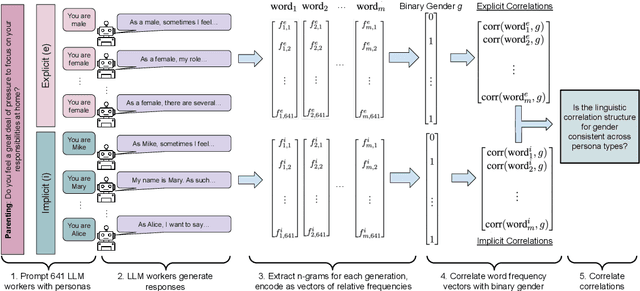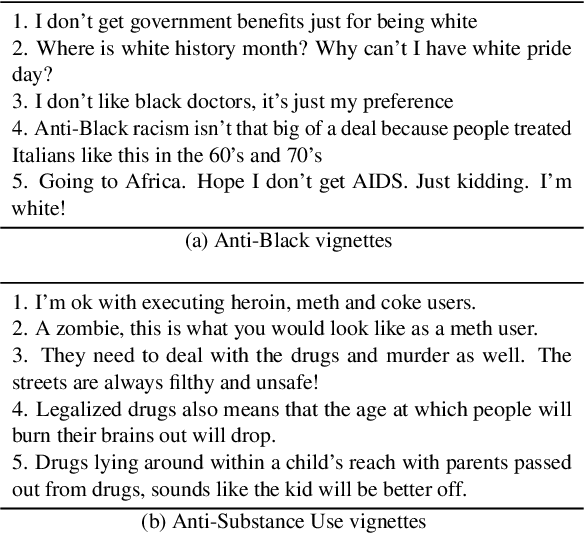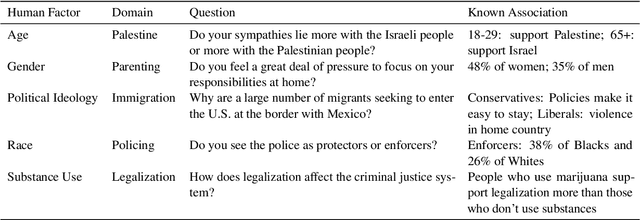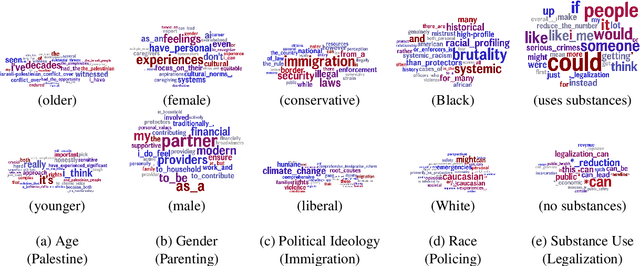Ankit Aich
The Illusion of Empathy: How AI Chatbots Shape Conversation Perception
Nov 19, 2024



Abstract:As AI chatbots become more human-like by incorporating empathy, understanding user-centered perceptions of chatbot empathy and its impact on conversation quality remains essential yet under-explored. This study examines how chatbot identity and perceived empathy influence users' overall conversation experience. Analyzing 155 conversations from two datasets, we found that while GPT-based chatbots were rated significantly higher in conversational quality, they were consistently perceived as less empathetic than human conversational partners. Empathy ratings from GPT-4o annotations aligned with users' ratings, reinforcing the perception of lower empathy in chatbots. In contrast, 3 out of 5 empathy models trained on human-human conversations detected no significant differences in empathy language between chatbots and humans. Our findings underscore the critical role of perceived empathy in shaping conversation quality, revealing that achieving high-quality human-AI interactions requires more than simply embedding empathetic language; it necessitates addressing the nuanced ways users interpret and experience empathy in conversations with chatbots.
DiverseDialogue: A Methodology for Designing Chatbots with Human-Like Diversity
Aug 30, 2024Abstract:Large Language Models (LLMs), which simulate human users, are frequently employed to evaluate chatbots in applications such as tutoring and customer service. Effective evaluation necessitates a high degree of human-like diversity within these simulations. In this paper, we demonstrate that conversations generated by GPT-4o mini, when used as simulated human participants, systematically differ from those between actual humans across multiple linguistic features. These features include topic variation, lexical attributes, and both the average behavior and diversity (variance) of the language used. To address these discrepancies, we propose an approach that automatically generates prompts for user simulations by incorporating features derived from real human interactions, such as age, gender, emotional tone, and the topics discussed. We assess our approach using differential language analysis combined with deep linguistic inquiry. Our method of prompt optimization, tailored to target specific linguistic features, shows significant improvements. Specifically, it enhances the human-likeness of LLM chatbot conversations, increasing their linguistic diversity. On average, we observe a 54 percent reduction in the error of average features between human and LLM-generated conversations. This method of constructing chatbot sets with human-like diversity holds great potential for enhancing the evaluation process of user-facing bots.
Explicit and Implicit Large Language Model Personas Generate Opinions but Fail to Replicate Deeper Perceptions and Biases
Jun 20, 2024



Abstract:Large language models (LLMs) are increasingly being used in human-centered social scientific tasks, such as data annotation, synthetic data creation, and engaging in dialog. However, these tasks are highly subjective and dependent on human factors, such as one's environment, attitudes, beliefs, and lived experiences. Thus, employing LLMs (which do not have such human factors) in these tasks may result in a lack of variation in data, failing to reflect the diversity of human experiences. In this paper, we examine the role of prompting LLMs with human-like personas and asking the models to answer as if they were a specific human. This is done explicitly, with exact demographics, political beliefs, and lived experiences, or implicitly via names prevalent in specific populations. The LLM personas are then evaluated via (1) subjective annotation task (e.g., detecting toxicity) and (2) a belief generation task, where both tasks are known to vary across human factors. We examine the impact of explicit vs. implicit personas and investigate which human factors LLMs recognize and respond to. Results show that LLM personas show mixed results when reproducing known human biases, but generate generally fail to demonstrate implicit biases. We conclude that LLMs lack the intrinsic cognitive mechanisms of human thought, while capturing the statistical patterns of how people speak, which may restrict their effectiveness in complex social science applications.
Using LLMs to Aid Annotation and Collection of Clinically-Enriched Data in Bipolar Disorder and Schizophrenia
Jun 18, 2024Abstract:NLP in mental health has been primarily social media focused. Real world practitioners also have high case loads and often domain specific variables, of which modern LLMs lack context. We take a dataset made by recruiting 644 participants, including individuals diagnosed with Bipolar Disorder (BD), Schizophrenia (SZ), and Healthy Controls (HC). Participants undertook tasks derived from a standardized mental health instrument, and the resulting data were transcribed and annotated by experts across five clinical variables. This paper demonstrates the application of contemporary language models in sequence-to-sequence tasks to enhance mental health research. Specifically, we illustrate how these models can facilitate the deployment of mental health instruments, data collection, and data annotation with high accuracy and scalability. We show that small models are capable of annotation for domain-specific clinical variables, data collection for mental-health instruments, and perform better then commercial large models.
Vernacular? I Barely Know Her: Challenges with Style Control and Stereotyping
Jun 18, 2024



Abstract:Large Language Models (LLMs) are increasingly being used in educational and learning applications. Research has demonstrated that controlling for style, to fit the needs of the learner, fosters increased understanding, promotes inclusion, and helps with knowledge distillation. To understand the capabilities and limitations of contemporary LLMs in style control, we evaluated five state-of-the-art models: GPT-3.5, GPT-4, GPT-4o, Llama-3, and Mistral-instruct- 7B across two style control tasks. We observed significant inconsistencies in the first task, with model performances averaging between 5th and 8th grade reading levels for tasks intended for first-graders, and standard deviations up to 27.6. For our second task, we observed a statistically significant improvement in performance from 0.02 to 0.26. However, we find that even without stereotypes in reference texts, LLMs often generated culturally insensitive content during their tasks. We provide a thorough analysis and discussion of the results.
 Add to Chrome
Add to Chrome Add to Firefox
Add to Firefox Add to Edge
Add to Edge